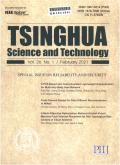Deep Broad Learning for Emotion Classification in Textual Conversations
IF 3.5
1区 计算机科学
Q1 COMPUTER SCIENCE, INFORMATION SYSTEMS
引用次数: 0
Abstract
Emotion classification in textual conversations focuses on classifying the emotion of each utterance from textual conversations. It is becoming one of the most important tasks for natural language processing in recent years. However, it is a challenging task for machines to conduct emotion classification in textual conversations because emotions rely heavily on textual context. To address the challenge, we propose a method to classify emotion in textual conversations, by integrating the advantages of deep learning and broad learning, namely DBL. It aims to provide a more effective solution to capture local contextual information (i.e., utterance-level) in an utterance, as well as global contextual information (i.e., speaker-level) in a conversation, based on Convolutional Neural Network (CNN), Bidirectional Long Short-Term Memory (Bi-LSTM), and broad learning. Extensive experiments have been conducted on three public textual conversation datasets, which show that the context in both utterance-level and speaker-level is consistently beneficial to the performance of emotion classification. In addition, the results show that our proposed method outperforms the baseline methods on most of the testing datasets in weighted-average F1.语篇对话中情感分类的深度-广度学习
语篇会话中的情感分类主要是从语篇会话中将每个话语的情感进行分类。它正成为近年来自然语言处理中最重要的任务之一。然而,对机器来说,在文本对话中进行情绪分类是一项具有挑战性的任务,因为情绪在很大程度上依赖于文本上下文。为了应对这一挑战,我们提出了一种结合深度学习和广泛学习的优势对文本对话中的情绪进行分类的方法,即DBL。它旨在基于卷积神经网络(CNN)、双向长短期记忆(Bi-LSTM)和广泛学习,提供一种更有效的解决方案来捕获话语中的局部上下文信息(即话语级别)以及会话中的全局上下文信息(如说话者级别)。在三个公共文本对话数据集上进行了大量的实验,结果表明,话语层面和说话人层面的上下文始终有利于情绪分类的性能。此外,结果表明,我们提出的方法在加权平均F1的大多数测试数据集上都优于基线方法。
本文章由计算机程序翻译,如有差异,请以英文原文为准。
求助全文
约1分钟内获得全文
求助全文

 求助内容:
求助内容: 应助结果提醒方式:
应助结果提醒方式:


